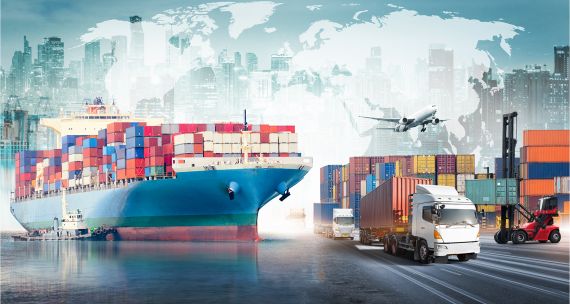Manufacturing production across the globe has been deeply affected by the COVID-19 pandemic. Disruptions have been particularly prominent in the Asia Pacific region, the central node of the world’s largest network of global value chains (GVCs). According the UN Economic and Social Commission for Asia and the Pacific (ESCAP), the region accounts for 50 per cent of GVC production lines and 78 per cent of GVC-related to advanced information and communication technologies. Global value chains were facing significant challenges before the pandemic hit. Disruptions caused by climate change, natural disasters, and the trade war between China and the U.S. exposed the limits of the current model of global production that depends so much on open trade and suppliers from different geographies. Compounded by the impacts of the pandemic, countries and companies are now being forced to rethink how production is organized.
Indeed, the time for GVC and supply chain readjustments has come, and it will affect most industrialized economies, including Canada. This dispatch explains why GVCs and their supply chains are important for global production and provides an overview of COVID-19-related disruptions and some initiatives countries are taking to restore a level of normalcy in the inextricably global production network.
What are GVCs?
The term global value chains (GVCs) synthetizes the new production model under globalization by which firms optimize their output by locating different stages of the production process across different countries where they can get add value for their investment and create a competitive advantage. GVCs depend on a smooth and cohesive supply chain to function well and maybe that is the reason people often use the terms interchangeably. Supply chains refer to the connection of all parts that are contributing to the production of a product, from the raw material to the distributor that delivers it to the final market. A global value chain reflects the process of adding value and that can happen in different countries and at different stages of production and involves all sectors of the economy, from agriculture to manufacturing.
GVC disruption: How bad is it?
There is little agreement about the extent and depth of the disruption, except that it is happening across sectors and around the world. Resilinc, a leading U.S.-headquartered company tracking GVC and supply chain disruptions using artificial intelligence,  put the number of COVID-19-related disruption events in April at around 300. To put this in perspective, Resilinc calculated a total of 2,629 events in 2018 for all type of disruptions, including natural disasters. Data from Panjiva S&P Global Intelligence detailed some ballpark calculations of the disruption, but the U.S.-based market intelligence company said that most companies do not yet know the full impact. According to S&P’s survey on import expectations done between January 20 and March 4, 2020, more than 50 per cent of respondents expect a decline in supplies, especially in the chemical sector.
put the number of COVID-19-related disruption events in April at around 300. To put this in perspective, Resilinc calculated a total of 2,629 events in 2018 for all type of disruptions, including natural disasters. Data from Panjiva S&P Global Intelligence detailed some ballpark calculations of the disruption, but the U.S.-based market intelligence company said that most companies do not yet know the full impact. According to S&P’s survey on import expectations done between January 20 and March 4, 2020, more than 50 per cent of respondents expect a decline in supplies, especially in the chemical sector.
The Asia Pacific Foundation of Canada is also running a global survey asking companies and micro, small and medium enterprises (MSMEs) to assess the state of the disruptions caused by COVID-19 on their productions plans.
Implications of GVC disruption
Because of increasing disruptions – accelerated by the U.S.-China trade war and aggravated by COVID-19 – suppliers and manufacturers across the globe have been re-purposing, re-stocking, and re-furbishing their production networks. Disruptions are not just transitory; they are undermining this globalized system of production and companies are now taking measures to adjust.
The Asia Pacific has been the most proactive region in the world in the effort to re-start international economic exchange. This is understandable given the high concentration of GVCs in the region and that it was hit by COVID-19 before other parts of the world. The region was also in the midst of a historic transformation of investment and manufacturing when the pandemic hit. ESCAP reported in 2018 that 88 per cent of global investment in redirecting manufacturing (‘reshoring’) went to Asia. Malaysia, Thailand, and Vietnam are the countries that have most benefited from this reshoring, with half of the investments in new factories and processing plants previously earmarked for China going to Vietnam since 2017, according to the ESCAP report.
The Kearney Reshoring Index, a tool for assessing deviations in investment in manufacturing across the globe, confirms this trend. In spite of the efforts by the Trump administration to force manufacturing facilities to return to the U.S., leading multinational companies have not responded as expected. While companies have diversified their production centres and suppliers in the wake of the U.S.-China trade war, most of the gains have gone to Southeast Asian economies and Mexico, not to the U.S. In fact, the U.S. dropped seven points in 2019 in attracting reshoring, according to the Kearney Report, even after the government forced a drastic reduction of Chinese manufacturing imports by 17 per cent. The Kearney Reshoring Index data suggests that COVID-19 will not improve the reshoring trend for the U.S. On the contrary, companies are diversifying their suppliers and subcontractors in countries in closer markets but not necessarily in the U.S. itself. This is an excellent opportunity for Mexico, Latin America, and Canada if these countries are indeed keen to attract that investment opportunity.
Global governance and the way forward
Companies are moving fast from assessing the situation to implementing measures to prevent more damage. The World Economic Forum has argued for the need to find common denominators – like open ports, customs facilitation, and clear sanitary and quality standards – to stabilize production networks and trade. This will not be easy if the United States continues to undermine multilateralism, while China wrestles to rally countries towards working within the boundaries of the status quo, leveraging its exceptional economic power within the existing multilateral institutions. Given these two polarized forces, and compounded by the pandemic’s wholesale disruption, there is an urgent need to restore global governance and co-operation in shared areas most severely impacted, like trade openness and trade facilitation. Global governance is the capacity of global actors – states, companies, international organizations – to co-ordinate actions that solve, or at least control, global problems. GVCs, by their very nature, need global governance on trade, investment and innovation in order to exist.

The most urgent policy idea advanced by the World Economic Forum (WEF) and lauded by many OECD member states, including Canada, is to set up new rules that sort out current bottlenecks in logistics and transportation. The establishment of a ‘global essential worker’ is one of the most urgent new rules being posited. The central idea is to deem trade-related workers and labourers as essential, so they have prioritized health attention across the world. According to WEF calculations made in early May, around 90 per cent of all traded goods are transported by sea. There are an estimated 1.2 million sea labourers currently overburdened, overworked, or stranded in ships at sea or in ports and on whom international trade depends. There are 100,000 more waiting in port to take over shifts from these workers. Since there are few protocols in place to ease docking, transfers, health, and social assistance for sea labourers across countries, changing shifts and clearing personnel from quarantine regulations has proven difficult. The more states that adopt a protocol for global essential workers, the more manageable the recovery of global value chains will be.
Managing transportation and logistics for trade is urgently needed in the current global value chains disruption, and action is needed now. COVID-19 has demonstrated the underlying weakness of a system that relied too heavily on just-in-time supplies and low inventory facilities.
In the medium term, a significant transformation currently underway is the movement towards digital supply networks. This relatively new concept means that companies have to embrace digital technologies, including the Internet of Things (IoT) and artificial intelligence (A.I.), to foresee disruptions in the supply chain and find alternative production sites and businesses ready to enter the production line. COVID-19 has added a sense of urgency to this transition and the best investment governments can make to help MSMEs is to invest in hardware and software to help them be sustainable in the new environment and competitive within GVCs.

The World Trade Organization has been advocating since 2015 for moving GVCs from the linear production line that trusted in single lines of supply to an interconnected and more efficient network with multiple capabilities and side alternatives. The Asian Development Bank has also been actively issuing policy recommendations for preventing shortages since February 2020, especially for the health and protective industries. The ADB is also helping Asian governments provide quick lines of credit to ramp up domestic production lines of personal protection equipment (PPE) and other medical supplies across the Asia Pacific, and to build state capacity so countries can monitor their health requirements and medical equipment procurement.
For its part, Canada needs to urgently engage in the GVC conversation where it touches upon 1) Solving disruptions in international trade through proven global governance mechanism; and, 2) Helping Canadian industry – especially MSMEs – adjust to the new environment using digital technologies.
Regarding the first point, Canada also needs to engage in international negotiations to ensure fair competition and quality control among the different stakeholders of future global value chains. The Asia Pacific Economic Cooperation is probably the best forum to start this conversation. It is the only regional forum that China and the United States are part of, and where other middle powers like Canada, Japan, Australia, and Indonesia have a seat at the table to mediate the establishment of standards that benefit the whole region. About the second, the discussion has been front-and-centre since COVID-19 hit Canada, and the Minister of Industries, Science and Innovation has already announced incentives to reshore the most urgent items required for patient care. The Conference Board of Canada, meanwhile, has advocated for enhancing Canadian production reliability through digital technologies. The Government of Canada can answer this call and significantly assist MSMEs by helping to connect them to GVCs through Artificial Intelligence and the Internet of Things. The federal Innovation Superclusters Initiative is making progress on this front, calling on innovative Canadian firms across the country and sectors to collaborate in the Fourth Industrial Revolution that will support the global value chains of tomorrow.





